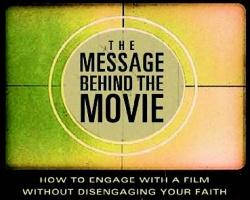The Message Behind the Movie: How to Engage with a Film Without Disengaging Your Faith
Douglas M. Beaumont
Moody Publishers, 2009, 178 pp., $14.99
MessageBehindTheMovie.com
Sacred Terror: Religion and Horror on the Silver Screen
Douglas E. Cowan
Baylor University Press, 2009, 315 pp., $24.95
baylorpress.com
Religions of the Stars: What Hollywood Believes and How It Affects You
Richard Abanes
Bethany House, 2009, 190 pp., $13.99
bethanyhouse.com
Small Screen, Big Picture: Television and Lived Religion
Diane Winston, Editor
Baylor University Press, 2009, 527 pp., $29.95
baylorpress.com
Performing the Sacred: Theology and Theatre in Dialogue
Todd E. Johnson and Dale Savidge
Baker Academic, 2009, 175 pp., $17.99
bakeracademic.com
Doug Beaumont, a teacher at Southern Evangelical Bible College, has a message for Christian “cave dwellers” who pursue purity by avoiding all movies and “Teflon Christians” who gladly will watch nearly any movie, no matter how bad: Both are being lazy!
Beaumont believes Christians are sinfully ignorant about how movies work, and he aims to address that deficit in two ways. The first half of his book is a balanced, discerning and wise exploration of movies, which he calls “the signs of our times.” Here, Beaumont focuses on the stories movies tell and how they tell them. His thinking is clear and his writing is crisp, making this one of the better introductions to film for Christians that I’ve read in decades.
The second half of the book helps Christians do apologetics with films that critique foundations of Christian faith, such as the need for salvation and the reliability of Scripture. This material should help Christians who are taking their first, tentative steps into the world of film appreciation.
Religious studies professor Douglas Cowan once avoided horror movies with religious themes because they terrified him. Now he believes watching movies about vampires, Satan and other things that go bump in the night can help us understand our “deeply embedded cultural fears of the supernatural” and our “entrenched ambivalence about the place and power of religion in our society.” If you’ve ever marveled at the power of good (or bad) horror movies, or know someone in their thrall, this book will help you see the light in the darkness.
Religions of the Stars springs from the author’s performing arts background (he has sung, danced and acted in Nashville, New York and Hollywood) and his writing on cults and religious movements. Abanes claims we are being affected “as never before” by celebrities’ beliefs, which he explores in six detail-drenched chapters.
Chapters on Oprah, Buddhism and the occult may help some readers understand stars’ worldviews and include Bible-based critiques of these beliefs. The chapter on “Mormons in Movieland” (Marie Osmond? Napoleon Dynamite‘s John Heder?) is short on celebs and long on theology. Some believers may find the Scientology chapter intriguing, but will they care about Madonna and Kabbalah?
There’s nothing here about what Christians are doing in Hollywood. For that, check out Behind the Screen by Act One’s Spencer Lewerenz and Barbara Nicolosi. YouthWorker Journal movie critic Craig Detweiler is one of 16 academics featured in Small Screen, Big Picture. Essays examine “Lost,” “The Sopranos,” “Battlestar Galactica,” “Deadwood,” “The Wire,” “The West Wing,” “The O.C.” and other programs to see how the big questions are explored on the small screen. You may not agree with editor Diane Winston that “television has superseded church” as a virtual meeting place to explore life’s meaning, but you’ll find the book’s analyses fascinating.
Christian books on culture have largely neglected live theatre, which was condemned by the Puritans of Shakespeare’s day and has troubled many believers ever since. Dale Savidge, executive director of Christians in Theatre Arts, and Fuller professor Todd Johnson team up to explore live theatre’s history, including its connections to biblical stories and Christian traditions. The authors make a compelling case that theatre’s power to touch and transform viewers has become increasingly important in our depersonalized, “virtual” world.




